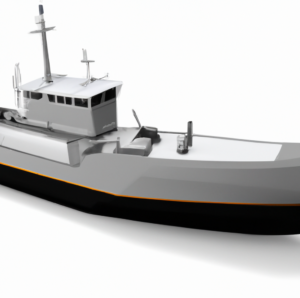
Naval architecture, the intricate blend of art and science, lies at the heart of ship design and construction. It encompasses a broad range of disciplines, including engineering, mathematics, physics, and aesthetics, all converging to create vessels that sail the seas with grace and efficiency. In this article, we will delve into the fascinating world of naval architecture, exploring its principles, techniques, and the key considerations that shape the design of modern ships.
The Foundations of Naval Architecture:
Naval architecture traces its roots back to ancient civilizations, where seafaring vessels were crafted using basic principles of buoyancy and stability. Today, it has evolved into a highly sophisticated discipline that involves complex calculations, computer simulations, and advanced modeling techniques. Discover the historical origins of naval architecture and how it has evolved over time.
Designing for Performance:
Naval architects strive to create ships that maximize performance in various conditions. Learn about the fundamental factors that influence ship design, including hydrodynamics, resistance, propulsion, and maneuverability. Uncover the secrets behind hull shape optimization, minimizing drag, and achieving optimal stability for different types of vessels.
Ship Structures and Materials:
Explore the structural aspects of ship design, encompassing the selection of materials, load analysis, and structural integrity. Discuss the challenges of balancing strength and weight while ensuring safety and durability. Highlight the evolution of materials, from traditional steel to advanced composites, and their impact on ship design.
Safety and Stability:
Naval architects play a critical role in ensuring the safety and stability of ships. Delve into the principles of stability, understanding the factors that affect a vessel’s ability to resist capsizing or excessive rolling. Uncover the role of ballast systems, stability criteria, and advanced stability assessment tools employed by naval architects to guarantee safe operations.
Human Factors and Ergonomics:
Beyond engineering considerations, naval architects must address the human aspects of ship design. Discuss the importance of ergonomic design, crew comfort, and efficient layout planning to enhance onboard operations and safety. Explore the design of control centers, living spaces, and navigational equipment to promote a seamless and comfortable environment for the crew.
Environmental Sustainability:
In recent years, environmental consciousness has become a paramount concern in naval architecture. Examine the growing focus on sustainable ship design, including energy-efficient propulsion systems, waste management solutions, and emissions reduction strategies. Discover how naval architects are driving innovation towards greener and more eco-friendly vessels.
Conclusion:
Naval architecture is a multidimensional field that combines science, engineering, and artistic vision to create the vessels that traverse our oceans. From conceptualizing a ship’s form to optimizing its performance, naval architects face a myriad of challenges. As technology advances and sustainability takes center stage, the role of naval architects in shaping the future of ship design becomes ever more crucial. Through their expertise and ingenuity, they continue to push the boundaries of what is possible, creating safer, more efficient, and environmentally friendly ships for generations to come.